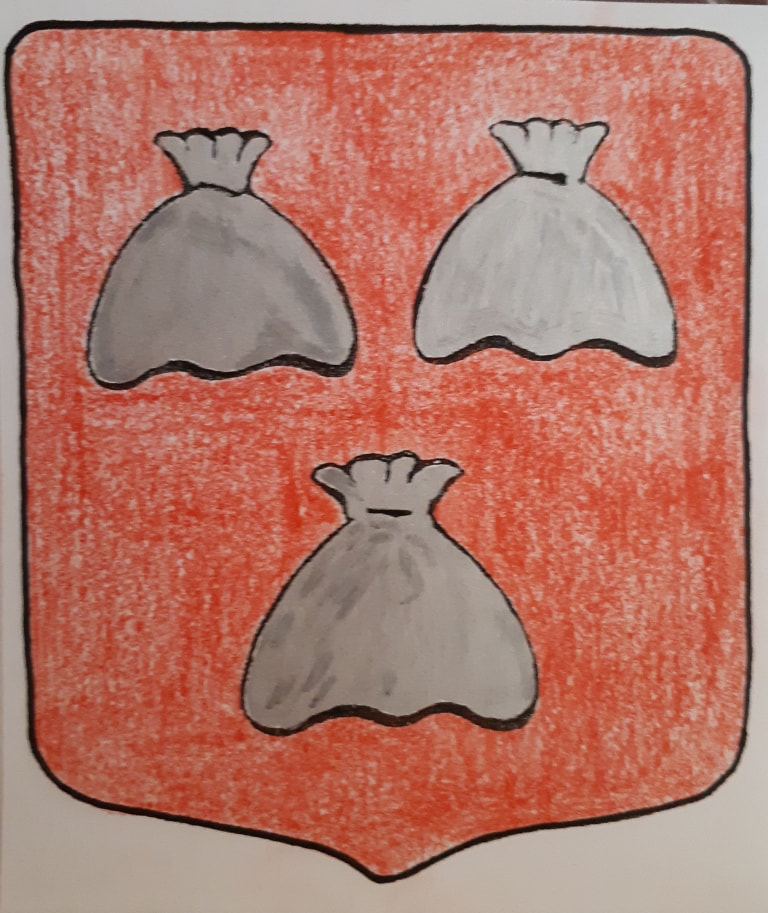OctoberList of articles
0 Comments
by Rev. Reingard Knausenberger
Levi was a very commonly used name, as the of ‘son of Alphaeus’ he is identified according to his ancestry, and by the description of a profession he introduces us into the world of finance, trade and economic management. Levi is the name the Gospels of Mark and Luke (Mk 2:14; Lk 5: 27) use when relating the calling out of this individuality into the circle of the 12 disciples. The Gospel of Matthew, though, highlights other subtler aspects: ‘And as Jesus walked on, he sees a person (literally: a human being) sitting in the tax-collecting booth, by the name of Matthew, and he speaks to him: Follow me! And he stood up and followed him.’ (Mt 9: 9). Nathanael and Matthew are the only two disciples whose individual calling is described in detail (Peter and Andreas, the sons of Zebedee are each called together). Both are obviously scholars of their history and deeply connected to their prophecies, they are educated men with inner initiative. Matthew, or Mathai, was the given name as apostle after his calling. Capernaum was his home, where Jesus also often was. It has a special ring when we hear: ‘Jesus sees a human being sitting in the tax-collector booth.’ He sees, knows deeply, has an insight of the true individuality of this person. Tax-collectors were normally despised as traitors and considered dishonourable and self-serving. Yet Jesus sees a true striving human being who has developed his humanity, compassionate, self-controlled, an awake exact observer acting outwardly congruently with his inner values. That something noble, even ‘kingly’, emanates from him seems expressed in the fact that many other ‘tax-collectors and sinners’ happily join the farewell meal to which he has invited Jesus. The Gospel which he then writes, bears witness to qualities of nobility and kingship as well as to earthly conditions and requirements. He can traverse between the dimensions of spirit and matter. Many more times than any other gospel, he speaks of sums of money and their functions (37 times) and mentions 10 different currencies. Was it possibly a deliberate choice that he engaged with the aspect of life where the danger of falling into materialistic and superficial, arrogant behaviour patterns is most tempting? Could he therefore bring some valuable experience into the circle of disciples? At this first meal that a Gospel describes which Jesus shares ‘publicly’ with others, two motifs resonate with each other: bread and money, stone (metal, coins) and bread, selling and buying so that humans can be nourished. It is Matthew who knows deeply about this relationship. There are areas of earthly life which Christ could only comprehend through human souls. The first Gospel is characterised by careful structuring of the content and through interest in numbers. It is Mathew who has parables relating of the treasures to be found in the earth. The symbol of this Gospel is the developed elevated human being with wings. Does it surprise then that the last word this Gospel lays into our heart to carry with us always as a compass is: ‘’And see, I will be in your midst every day until the completion of earthly time”? from the talks in December 2020 by Rev. Michaël Merle
Based on Matthew’s own Gospel it is reasonable to think that he was the last of the twelve disciples to be called (and not Judas, who is placed last on lists of the Apostles because of his task). None of the Gospels relate the calling of all twelve. Matthew was a tax collector. Matthew is a Greek name, and he is also referred to as Levi. It is conceivable that, as an official of the state, he had a Greek or international name - Matthew, while at home, in his community, he had a Hebrew name - Levi. Matthew is referred to as the ‘son of Alphaeus’, yet there is no mention that his brother is James. It is therefore possible that being a ‘son of Alphaeus’ was a spiritual path and not a family lineage. This possibility would consolidate the idea that there is nothing arbitrary about the people called by Jesus. Jesus calls people who are seekers on a path. It is also possible that Thomas, who is on an esoteric, meditative path, is also a ‘son of Alphaeus’. This would place Matthew, Thomas and James in a common community of ‘sons of Alphaeus’. This would be a reason for his calling. We do not know how Matthew died. There are ten different accounts of his death, but they suggest that he died a martyr’s death. The Gospel that Matthew wrote was the second Gospel to be written. The oldest manuscripts extant are not signed, but they are believed to have been written or dictated by Matthew. There are suggestions that the synoptic Gospels all reference an older source document often referred to as the Q-source. Matthew is connected with the Foundation Stone of amethyst. Amethyst is associated with Aries and is the stone of sobriety. Amethyst is extremely important as it represents the step into the next cycle. The soul quality connected with amethyst is devotion that must be transformed into the spiritual quality of the power of sacrifice. This spiritual quality is shared with the angelic world. The power of sacrifice is completely selfless with no hope of any personal gain through it. Report by John-Peter Gernaat
The Old Testament Study continued the study of the soul journey of the Hebrew people for 40 years after leaving the land of Egypt. The Hebrews are a newly constituted nation formed from the constellation of a single family. The Song to YHWH (Yahweh of the Elohim) expresses the battle of the soul for a new way of being human. It is a time of Kali Yuga when the connection with the Divine is lost. The Egyptians were unable to establish a new connection and felt themselves completely plagued. The Hebrews, through the newly acquired ability of brain-based thinking, could be led by an initiate to a new connection with the Divine. The initiate is Moses, initiated in a previous incarnation into the Zarathustran stream as a disciple of Zarathustra and then initiated shortly after birth in a basket of rushes (a coffin, so to say) on the Nile before being led into the decaying Egyptian Mysteries in the court of Pharaoh. The new ordering of society in a humanity no longer clairvoyant was through statutes and laws. The first camp of the Hebrews is at Elim or El-him that is a place related to El or God. It has 12 springs, a full constellation and hence a spring for each tribe, and 70 palms, a completeness of time – time, represented by 7, and then multiplied by 10 being the completeness of whatever it is associated with. Seven is related to the 7 mobile stars or planets. This is echoed in the Trinity Gospel readings between St John’s Tide and Michaelmas in which we read of Jesus sending out first the 12 disciples and then at another time sending out 70 disciples into the villages where he is to go. Next YHWH establishes the idea of Daily Bread for the Israelites. Note that the Israelites are given ravens to catch and eat every evening, without restriction. It is the Manna that they find like a white dew in the morning that may be collected only in sufficiency for each person for that one day (except on the sixth day). The Manna, that is wafer thin, feeds the soul. The wafer is now imbued with the Christ as his body in our Eucharistic celebrations. The seventh day is given to the Israelites to establish a rhythm of life. Rhythm is required for the development of the human being. YHWH recognises that the Israelites do not have an incorporated I-organisation but that they are nation that will develop the conditions necessary to allow this to be brought about. While the Israelites do not yet have the indwelling capacity for discernment, he established the need that they must follow what he says to the letter. Thereafter the Israelites suffer thirst. Their life forces are in need of regeneration and Moses, who is most in contact with his I-organisation and can stand upright in himself like a staff, strikes the rock with his “staff” - literal and metaphorical – allowing the spiritual water of life to flow again for the Israelites. The staff begins to turn green and bud into leaf with the Water of Life. Thereafter Moses’ father-in-law, Jethro, arrives where the Israelites are camped. (Clearly, they are not lost in the desert, if others know exactly where they are!) Jethro offers a sacrifice to El (God the Father). This establishes for the Israelites the relationship between El and YHWH. In order for the individual to be able to discern for themselves what is right laws and order must be established to replace the direct word of the Divine that had sounded in their ears when humanity was still clairvoyant. The new brain-based thinking must be given the measures with which to discern. At first only Moses acts as judge for all of the Israelites. It is Jethro who proposes that judgement can be shared out at various levels of responsibility. It is Jethro who recognises that people have the capacity to share in this responsibility. With the incorporation of the I-organisation into the human being it is now our task to each take on this responsibility and stand in judgement of our own discernment, no longer needing external laws and judges. It is the prophets who first recognise that the law must become internalised, and it is Christ who says: “I have come to fulfil the law” with the full incorporation of the I- organisation into the human being. By each Israelite carrying the letter of the law for himself the nation of Israel becomes a nation of ordained priests for all of humanity. In order that the Israelites know that YHWH is their Elohim and the agent of El they will experience Him in a cloud over the mountain of God. It requires a three-day preparation for their souls to be opened for this experience. In this preparation the instruction is not to incline themselves towards the feminine or creative principle. The experience is heralded by the sounding of the ram’s horns, the new Age of Aries; no longer the Egyptian Age of the Bull. The experience of YHWH as the principle of El is that of sound and light. Moses makes the people leave their camp to meet this experience. Through the experience the Israelites are shaken in their souls like an earthquake. Then the Israelites receive the Ten Commandments, or the completeness of the law. They are referred to as the decalogue, literally meaning ten words. Rudolf Steiner has offered an accurate translation from the ancient Hebrew that requires some amplification to be fully understood. These Commandments are not legal ordinances, they are not punishable laws, as they have become. They all point to what is required in order for the preparation of the human being to be able to incorporate the I-organisation in the future. When understood correctly, it is also easy to understand that Christ says: ”I have come to fulfil the law”. |
Article Archives
December 2021
2023 - January to December
2022 - January to December 2020 - January to December 2019 - January to December 2018 - January to December 2017 - January to December 2016 - January to December 2015 - January to December 2014 - November & December 2013 - July to December 2013 - January to June 2012 - April to December Send us your photos of community events.
Articles (prefaced by month number)
All
|



 RSS Feed
RSS Feed